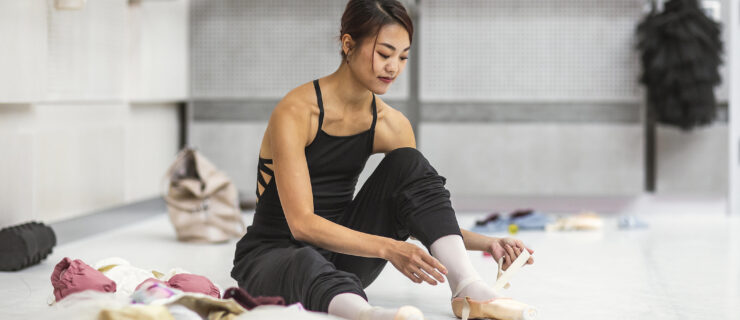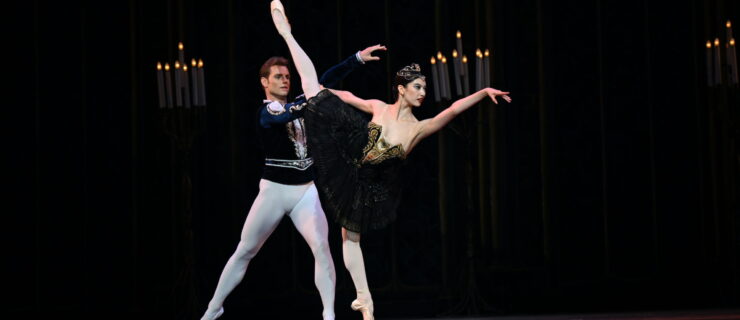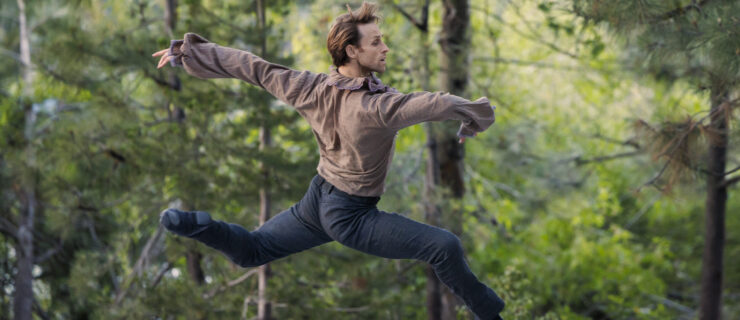Call Board
Dance Theatre of Harlem Redux
After an eight-year hiatus, Dance Theatre of Harlem is back. In December, the company announced that it will relaunch this August under new artistic director Virginia Johnson, a former DTH principal (and the founding editor of Pointe). DTH will once again be built around multicultural dancers and an eclectic repertoire. “My main goal is for the company to be as much the same as possible,” Johnson says, crediting founding artistic director Arthur Mitchell’s legacy. “The expression that was Dance Theatre of Harlem was magnificent.”
For the 2012–13 season, scheduled to begin in October, DTH will premiere five new works. All of them had their initial workshop periods over the past two years via Harlem Dance Works 2.0, a program that develops new repertoire for the company. In addition, DTH will present returning ballets such as Glen Tetley’s Dialogues and George Balanchine’s Concerto Barocco. “I want this company to use tradition to carry ballet forward in a way that communicates to a contemporary audience,” Johnson says.
Johnson has recruited classical dancers who are capable of different movement styles. “To do our repertoire, you need to have a multilingual spine,” she says. The dancers will start working this summer.
“What will really be amazing,” Johnson says, “is that moment opening night when the curtain goes up and it’s Dance Theatre of Harlem again.” —Julie Diana
Upheaval At Ballet San Jose
After a period of uncertainty during which Ballet San Jose artistic director Dennis Nahat’s authority was gradually eroded, the board officially removed him from the position this January. Nahat cofounded Cleveland Ballet in 1976, shepherded it through its dual-city days as San Jose Cleveland Ballet, then became artistic director and moved the company permanently to San Jose in 2000. “I have no idea what went wrong, but it felt like a hostile takeover,” Nahat said after learning he’d been pushed out.
Like many ballet companies, BSJ has struggled financially in recent years. In an effort to boost its reach, in December the company announced a partnership with American Ballet Theatre. BSJ executive director Stephanie Ziesel explains that the idea grew from discussions with her sister, Mary Jo Ziesel, who serves as director of education and training at ABT. The initial concept was to incorporate ABT’s National Training Curriculum into the BSJ School, but the conversation soon expanded to involve a larger arrangement, in which BSJ would gain access to ABT’s repertoire and coaching staff.
Ziesel says that moving forward, the company will be led by a principal ballet master, former BSJ dancer Raymond Rodriguez, and an artistic advisor, former ABT II director Wes Chapman. “Wes has been engaged for the season,” says Ziesel, “while Ray is a permanent, full-time appointment.”
Ziesel says she wants Nahat to remain involved with BSJ. But none of Nahat’s ballets are on the group’s 2012 lineup, which features six works new to BSJ—including ABT staples like Robbins’ Interplay and Balanchine’s Allegro Brillante. “I hope that soon we can put this behind us and talk about the future,” says Ziesel. —Mary Ellen Hunt
Corella’s Barcelona Ballet Comes to NYC
It’s been two years since Barcelona Ballet—then known as Corella Ballet—made its triumphant U.S. debut. This April the young Spanish company comes back to New York City Center, and director Angel Corella thinks the world premiere they’ll present—Pálpito, choreographed by Nuevo Ballet Español artistic directors Ángel Rojas and Carlos Rodríguez—reflects the company’s evolution since its initial visit to the Big Apple.
“First, it represents our heritage by incorporating the flavor of Spain,” says Corella, who was born in Madrid and has been a principal with American Ballet Theatre since 1996. “It brings in things like fans and castanets and bells on the ankles of the dancers—elements from the various styles of Spanish dance.” Corella grew up with Rojas and Rodríguez, who were studying flamenco as he was training in ballet. “They’ve followed my career,” he says. “They told me that what they wanted to show with this piece is how my position in the company has changed. Early on I was the leader, the horse that pulls the cart, but now, the dancers are carrying themselves.” The full-company Pálpito, Corella says, will show off those dancers’ strengths.
And so will the rest of Barcelona Ballet’s New York repertoire: Clark Tippet’s Bruch Violin Concerto, “a very classical piece, so the audience can see the purity of their technique,” Corella says, and Christopher Wheeldon’s For 4, an all-male quartet originally made on Corella that will “showcase this amazing group of men we have right now.” (That group does not include Corella, who is only dancing in Pálpito.) Today’s BB is a rather different troupe than the one Corella first brought to City Center, with a strong Spanish contingent as well as some new British, Cuban and Japanese dancers.
The company’s new name, which was announced in February, is a reflection of its recent relocation to Barcelona after four years in Segovia, Spain. “That was my initial idea for the company,” Corella says. “I didn’t want people to come and see it for my name, but to come for the dancing and the dancers.” —Margaret Fuhrer
Another
Alice, This Time In DC
“I think Alice is having a moment right now,” says Septime Webre, artistic director of The Washington Ballet. It certainly seems like it: Webre’s ALICE (in wonderland) will have its world premiere at TWB in April, on the heels of Christopher Wheeldon’s smash Alice’s Adventures in Wonderland and the Royal Winnipeg Ballet’s WONDERLAND, which both debuted last year. “There was a Dracula moment some years ago, and then a Peter Pan moment,” Webre says. “Now it’s Alice’s time. Maybe we need a bit of fantasy.”
Webre is collaborating with composer Matthew Pierce on TWB’s adaptation of Lewis Carroll’s stories. “It’s a witty score, with jazz and rock influences,” Webre says. “The Cheshire Cat’s theme has a film noir feeling, and the Dodo Bird has a waddling bassoon line. The vividness of the book’s zany, poetic lines is reflected in the music.”
And the dancing. “I’ve tried to imagine the wordplay as step play,” Webre says. “So, for example, the funny exchange between the Fish and Frog Doormen translates into virtuosic legwork.” —MF
Allegra Kent On Her New Children’s Book
“Ballerinas are always trying to dance like swans,” says New York City Ballet legend Allegra Kent. “Swan Lake, The Dying Swan. I thought to myself, What if a swan decided to become a ballerina?”
Out of that felicitous idea grew Kent’s charming new children’s book, Ballerina Swan, published by Holiday House, which follows swan heroine Sophie as she struggles to master ballet technique. “Initially not everyone accepts Sophie because of her feathered appearance, and her wings make port de bras difficult,” Kent says. “But her beautiful long neck is an asset—and when she does a grand jeté, she’s the only one of the students who can actually fly!”
Kent, who dedicated the book in part to “George Balanchine, who understood unusual casting,” says she and Sophie have some similarities. “The way we both began—I remember my first classes being so hard, and thinking: I don’t know anything, I don’t know what I’m doing!” she says. “Of course, Sophie’s first class feels the same way. And Sophie and I both persisted anyway.” She laughs. “I think we have the same exuberance. I hope so!” —MF




